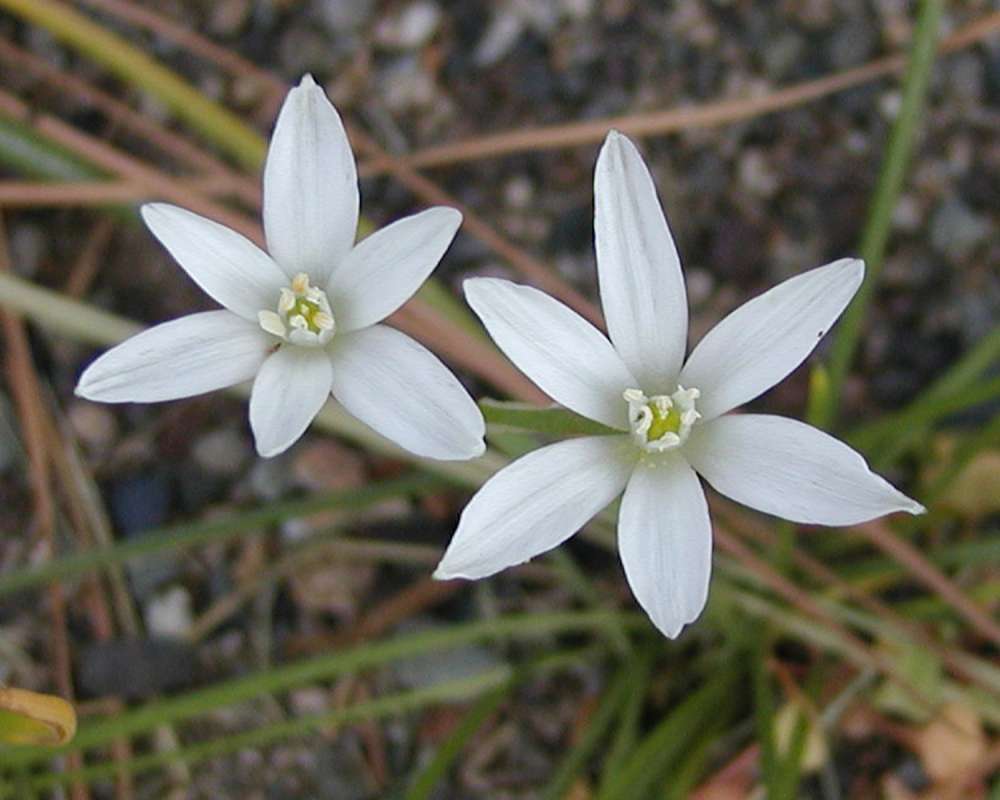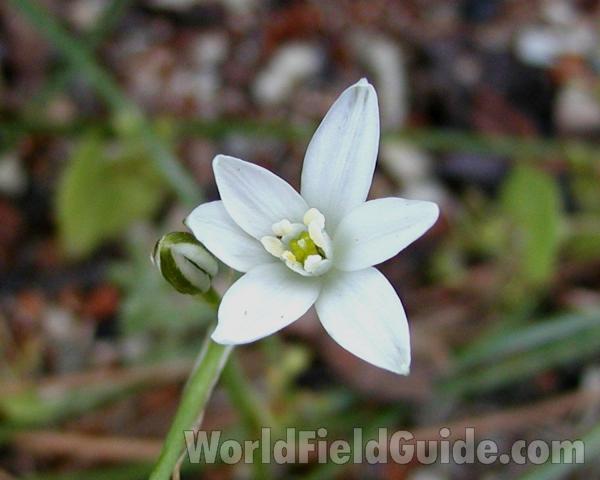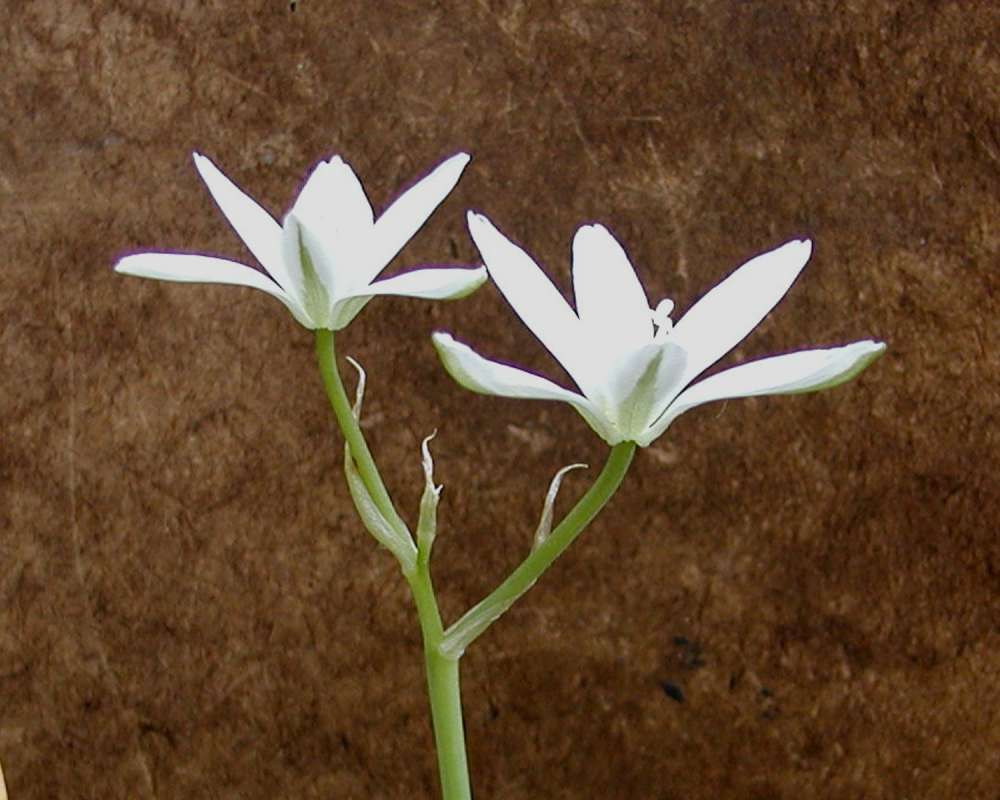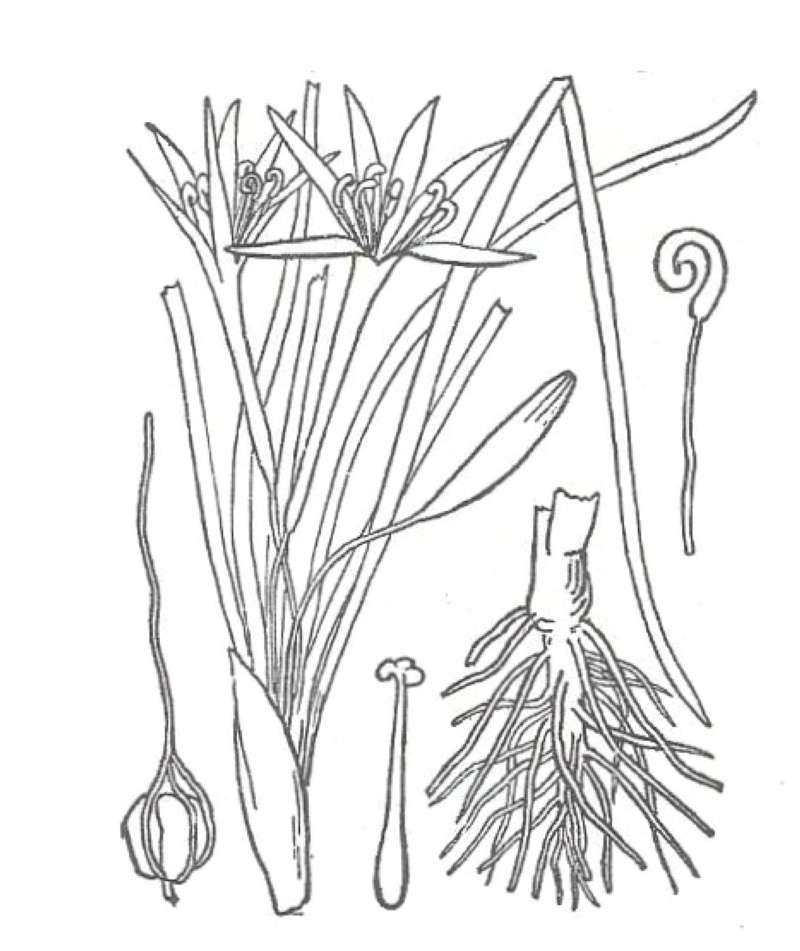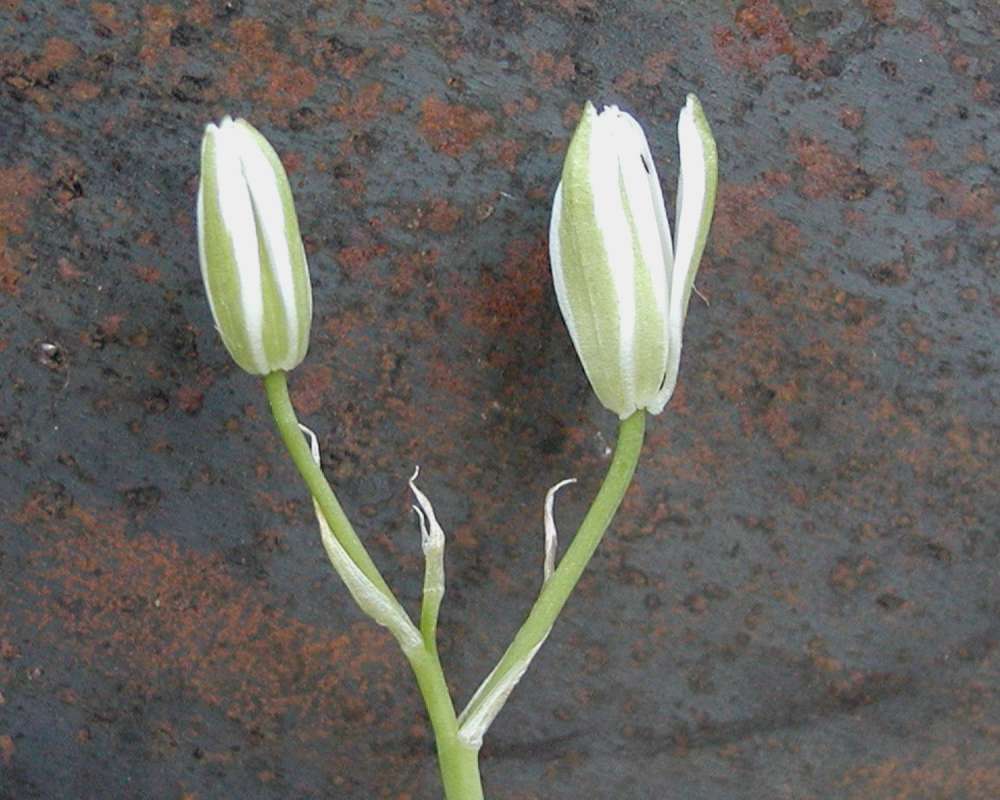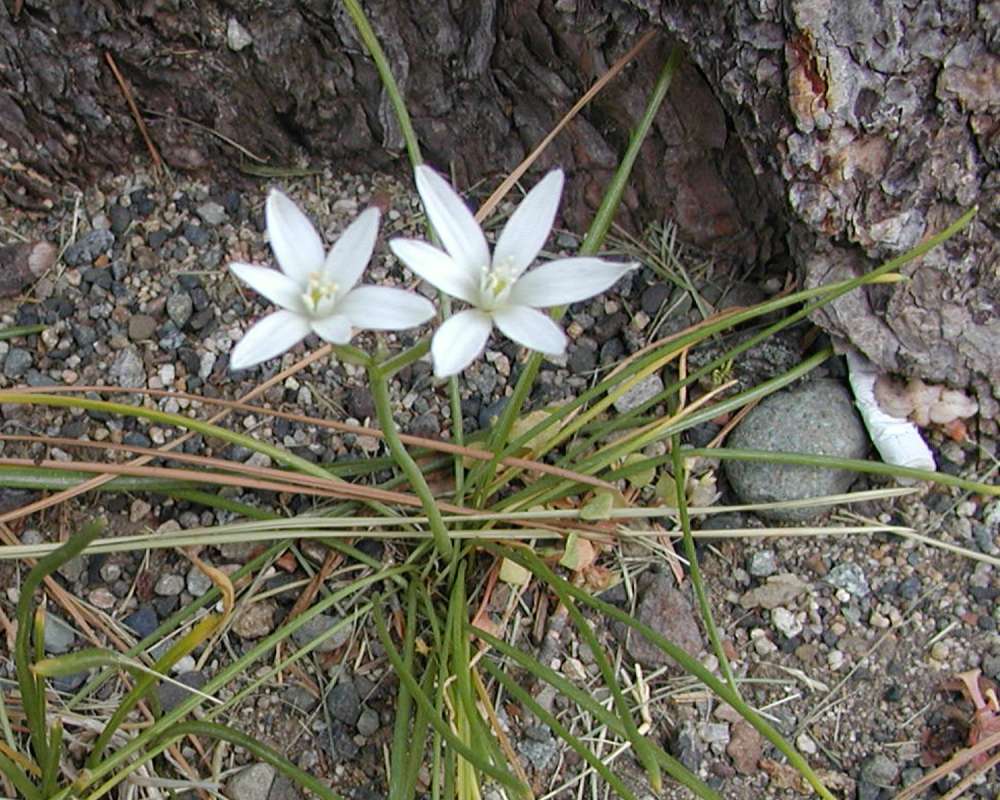SPECIES INFO
Star lily or sand lily (Leucocrinum montanum) is found from New Mexico north to South Dakota and Washington and west to Oregon and California. This species has a preference for sandy areas. The linear leaves are less than ten inches long. The white flowers are large.Leucocrinum genus (sand lily) is native to North America. There is only one species in this genus. This is a perennial with leaves up to about 10 inches length.
Native Lilies of North America are in this group. Some introduced agricultural plants and some lilies have been excluded even though they may be widely established.
Many wonderful wildflowers in the lily family can be found in North America. The trilliums (Trillium), wild onions (Allium), Trout Lilies (Erythronium) Mariposa lilies (Calochortus), Solomon's Seal(Smilax), lilies (Lilium).
The death camas group (Zigadenus) belongs here.
Lilies (Family Liliaceae) are usually characterized by having flowers with three (or six) petals that have radial symmetry. There are over 4,600 species divided into over 600 genera in this widespread family. North America has about 520 species in almost 90 different genera. (The North American numbers are based on the inclusion of the Amaryllis group with the lily family.)
We have used Lawrence as a first attempt to define this family. Then to further pursue our goal of using data base technology and a combination of taxonomy, geography, and plant features to create both an encyclopedia and a new type of field guide, we have divided this Liliaceae group into different sub groups. We used biological region of origin for the first division, and we will use various references including Heywood, Brummitt etc in their Flowering Plant Families of the World as published in 2007 to divide the species in each geographical area into smaller groups.
Lily Order (Order Liliiflorae) contains several families many of which are noted for their beautiful flowers. In addition to the rushes, this order contains the well-known lily family. Although some authors combine them with the lilies, here the Amaryllis, Iris, and Agave groups are presented in separate families.
Monocots are a large group of plants usually characterized by having leaves with parallel veins and a seed with a single shell. Most flowers are created with multiples of three. In the older botany texts, the Monocots were considered more primitive than the Dicots. However, many recent authors have placed the Monocots as an offshoot of the primitive Dicots. Here they are placed before the Dicots.
In l951 Lawrence at Cornell published a very detailed plant taxonomy for vascular plants. His taxonomy is very useful as he provided both a detailed explanation and also covered many genera. In the l990s Cronquist published a new plant taxonomy that improved the older taxonomy based on new knowledge. About the same time, Dahlgren published a different taxonomy.
Seed plants (Phylum Embryophyta) are generally grouped into one large phylum containing three major classes: the Gymnosperms, the Monocots, and the Dicots. (Some scientists separate the Gymnosperms into a separate phylum and refer to the remaining plants as flowering plants or Angiospermae.)
For North American counts of the number of species in each genus and family, the primary reference has been John T. Kartesz, author of A Synonymized Checklist of the Vascular Flora of the United States, Canada, and Greenland (1994). The geographical scope of his lists include, as part of greater North America, Hawaii, Alaska, Greenland, Puerto Rico, and the Virgin Islands.
Kartesz lists 21,757 species of vascular plants comprising the ferns, gymnosperms and flowering plants as being found in greater North America (including Alaska, Hawaii, Greenland, Puerto Rico and the Virgin Islands.
There are estimates within the scientific world that about half of the listed North American seed plants were originally native with the balance being comprised of Eurasian and tropical plants that have become established.
Plant kingdom contains a large variety of different organisms including mosses, ferns, and seed plants. Most plants manufacture their energy from sunlight and water. Identification of many species is difficult in that most individual plants have characteristics that have variables based on soil moisture, soil chemistry, and sunlight.
Because of the difficulty in learning and identifying different plant groups, specialists have emerged that study only a limited group of plants. These specialists revise the taxonomy and give us detailed descriptions and ranges of the various species. Their results are published in technical journals and written with highly specialized words that apply to a specific group.
On the other hand, there are the nature publishers. These people and companies undertake the challenging task of trying to provide easy to use pictures and descriptions to identify those species.

